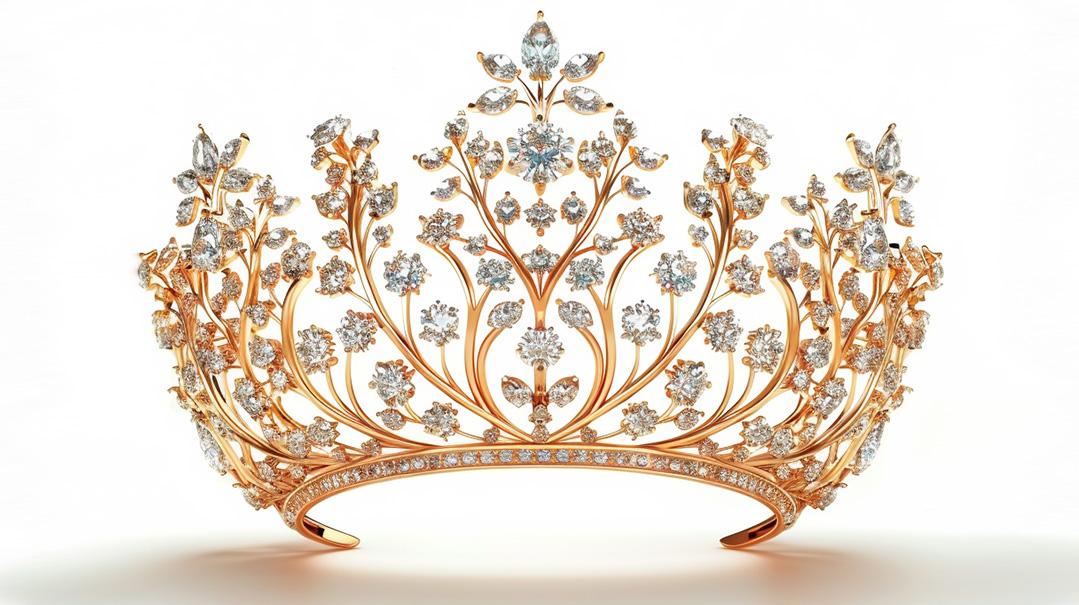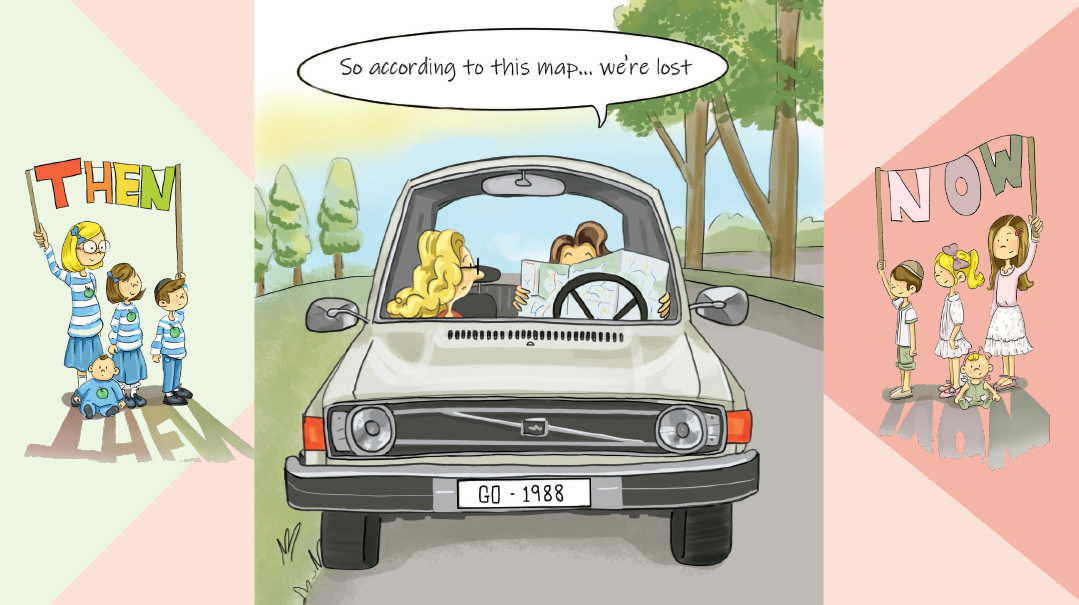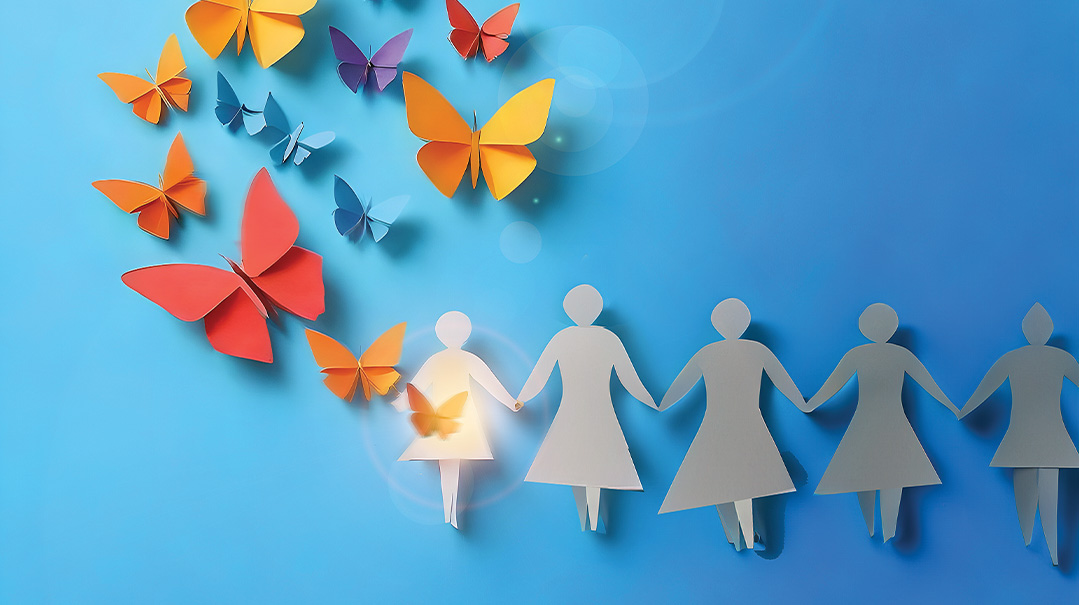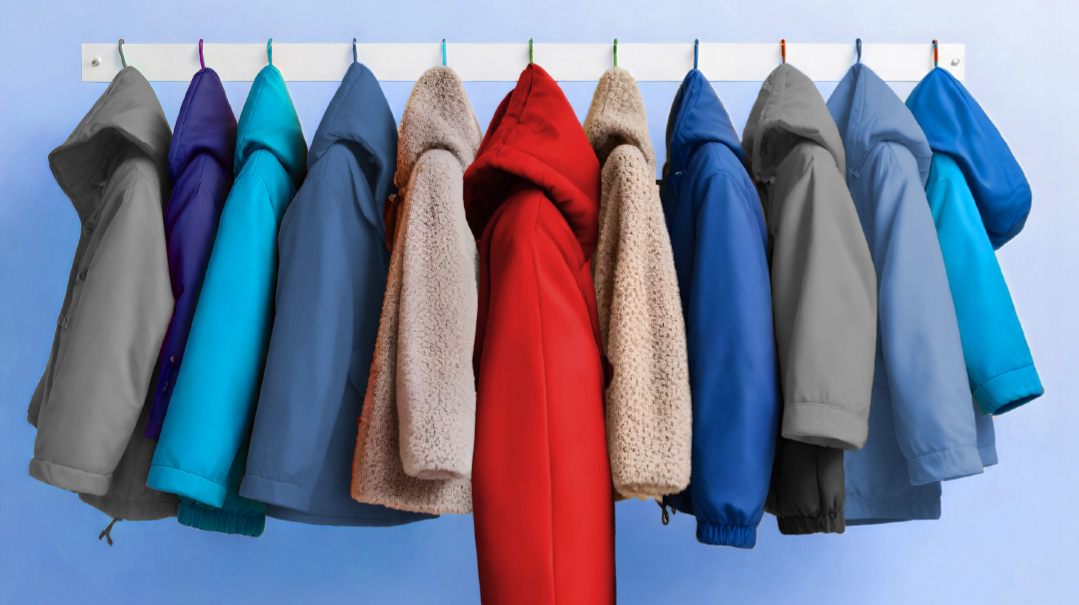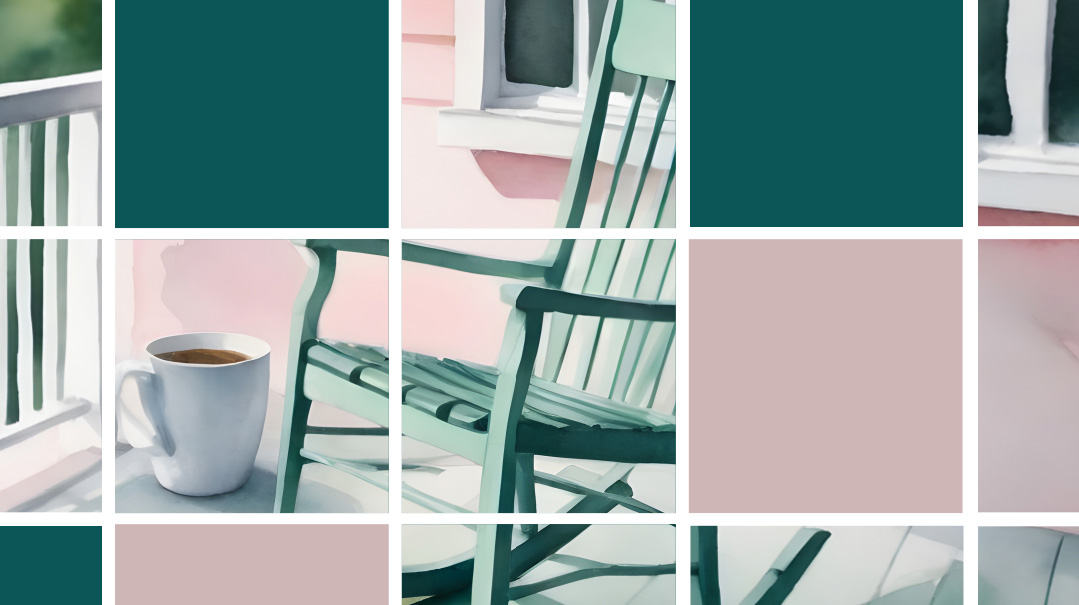The Redhead Warrior

She survived the gas chambers. Almost 80 years later, her granddaughter tells her story
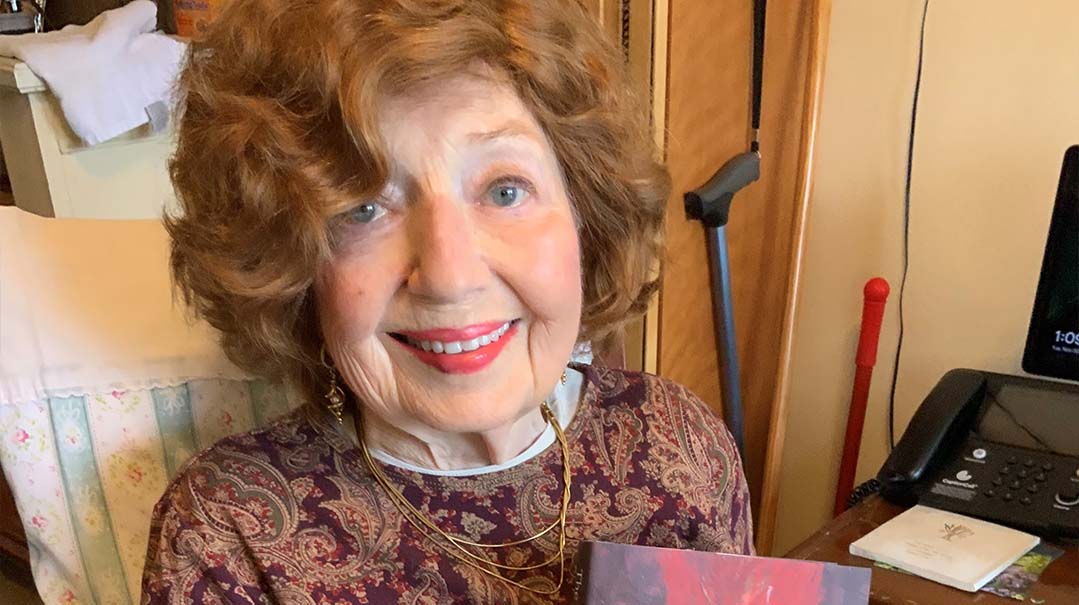
Nechama Birnbaum was in fifth grade when her teacher gave the class an assignment: Research and share a story that occurred during the Holocaust. Nechama shared a story about her grandmother Rosie.
Young Rosie had been in Auschwitz only a few days when she was assigned to split huge boulders into pebbles. She and her friends were starving; there had been little to eat in the Cehei Ghetto where they had come from, and the watery coffee and soup they ate not only tasted like diluted mud, it scarcely provided any nutrition. Equipped only with the hammers, splitting the rocks was difficult work, but with the meager, inedible food, it became unbearable. At that point, Rosie says, she was a muselman, walking dead.
Only a month previously, Rosie and her family had been living in Crasna, a small town on the border of Hungary and Romania. In May 1944, they were deported to Cehei, a muddy ghetto built around the Klein brick factory, where Rosie and her family were forced to carry heavy bricks across the yard.
From there, she was taken to Auschwitz, where she was separated from her mother and younger brother — they were sent to the gas chambers. Her sister, Leah, was with her, as were some of her friends from Crasna. Their heads had been shaven, and as she slammed her hammer into the boulder with whatever strength she was able to summon, she looked at her friends and noted how different they looked without their hair.
Noticing her sad expression, her friend Lily tried to comfort her. “Don’t be sad. We’re going to Heaven from here.”
Gitty, another friend, said she’d be happy to see what came next, and Chani said she imagined they were bound for the highest level of Heaven.
Rosie’s reaction was different. “You can go to Heaven from here if you want,” she told her friends, “but I’m going home from here.”
This story encapsulates Rosie’s indefatigable spirit and her will to live, even when faced with the most horrific aspects of humanity. Struck by Rosie’s iron will to live, Nechama’s teacher asked her to share Rosie’s story with the principal.
The story left an indelible mark on Nechama, and she never stopped marveling at her grandmother’s resilience and perseverance. She’d always wanted to write her grandmother’s story. She doesn’t remember a time when it wasn’t a dream.
But it wasn’t until her family took a trip to Europe in 2014, when she was 18, that she resolved to share her grandmother’s story with the world — a promise she fulfilled on November 28, 2021, when The Redhead of Auschwitz was published.
As she stood at the entrance of Auschwitz-Birkenau, Nechama thought of the story her grandmother often retold — and was struck by the idea that they were there because of her grandmother’s will to live.
“When I was standing there, it hit home more. She was here, and she was 18, and she said she was going home from here. And now I’m 18 and standing here. My grandmother did go home, and because of her, I’m here.”
Rosie
Rosie grew up in Crasna, which was part of Romania, and then later, Hungary. Her childhood wasn’t easy. Her father died when she was only five, while her mother was expecting Rosie’s youngest brother, Yecheskel. Her brother Pinchas died when he was seven, the result of an infection he contracted after stepping on a rusty nail. Rosie’s mother, Chaya Necha, supported the family by working as a cook for the local yeshivah.
Although she had a difficult childhood, there was joy, too.
Each year, Rosie’s school would organize a festival. Her mother was unable to attend — she couldn’t leave her job — but most of the town was there and Rosie and the rest of the town children looked forward to it each year. When Rosie was nine, she was part of the dance ensemble. For this, she was immensely glad; she possessed a natural rhythm, and she found the rhythm and beat in tasks as mundane as setting the table or drying the dishes.
Rosie’s performance in the festival was outstanding, and it reached the ears of a dance master from Bucharest. He came all the way to Crasna to try to recruit Rosie as his student. Although she had great potential, Rosie’s family turned him down, and her zeide promised he’d dance with her at her wedding.
Her zeide, Chaya Necha’s father, was like a second father to her, and Rosie drew strength from family — her mother and her sister, her uncles and aunt.
Yecheskel was born shortly after Rosie’s father’s death, and he was named for her father. She remembers how the shul was filled with crying as his name was given, but she didn’t cry.
“Yecheskel was our comfort baby,” she said.
It seemed caring was a core part of Yecheskel; he was a child who wanted to take care of his family. He’d give his portion of dinner to his mother, telling her he wasn’t hungry. He promised to take care of his mother and sisters as soon as he was old enough, and he told them all of his plans to start a business. He promised they’d have meat and books and a house with a fireplace.
One day, Yecheskel accompanied Rosie as she went to the marketplace to purchase eggs for the family. She sorted through the carton, looking for the best eggs. The egg seller was displeased, and asked her why she didn’t trust his goods, calling her “Freckle Face.”
When they left, Yecheskel asked her what was wrong with freckles.
“They’re ugly,” Rosie answered.
“I think they look like stars,” Yecheskel told her.
A few days later, Yecheskel came home with a brown paper bag and told Rosie, “I have a present for you.”
Yecheskel had used some money he’d put aside and gone to the pharmacy to purchase freckle cream. The pharmacist advised that application twice daily would eliminate Rosie’s freckles. Within three months, she didn’t have a single freckle.
When Rosie was 11 and her sister Leah ten, Chaya Necha arranged an apprenticeship for them with a local seamstress. They discovered that Leah was a genius dressmaker, and Rosie was assigned the ironing, a task she did beautifully.
After seeing Chaya Necha in a dress Leah made for her, a local wealthy family commissioned the girls to sew gowns for the entire family for an upcoming wedding. The project lasted for weeks, because not only did the family need gowns, but they also needed new dresses for sheva brachos, as well.
This job had a perk — the family owned a huge library, with built-in cherry wood shelves, ladders for access to the upper shelves, and armchairs arranged around a cozy fire. Rosie and Leah were allowed to borrow books, and they’d go home, arms laden with their treasures. When they finished reading, they’d lend the books to their friends, and then the group of girls would spend hours discussing what they’d read.
Rosie always had reservoirs of strength. After her grandfather died, Rosie said, “I realize that even though I’m still sad, I’m also happy again. I think of all the people not here, and I wonder why I’m still here. Even though I have no answers, and sometimes the sadness in my heart feels like it will pull me down and bury me, I know that everything will be okay.”
Rosie’s red hair was central to her identity. The local Romanian women, who saw red hair as cursed, would spit on her as she passed. But Rosie embraced her red hair, regardless of who disliked it; it embodied her essence and spirit.
Her mother attempted to change Rosie’s hair to blonde, dyeing her hair with nut oils. During these sessions, as her mother would rub the oil into her hair, Rosie would pray, Please let me have my red hair. When the dyes didn’t work, she’d stand in front of the mirror, eyes on her flaming hair, and say, I am beautiful.
“My grandmother wouldn’t let anyone tell her she wasn’t good enough,” says Nechama.
This kind of resilient thinking helped Rosie through her hardships, and the hardships were myriad.
Nechama
Nechama is young to have grandparents who are Holocaust survivors, but she’s the daughter of Rosie’s youngest daughter, who was born when Rosie was in her forties. Rosie’s doctor told her she wouldn’t carry the child to term, but Rosie told him she would — and she did.
Nechama shares a close relationship with her grandmother, even though when she was growing up, Rosie seemed different from other grandmothers. Her project about her grandmother’s survival story opened her eyes to what Rosie endured. During her teen years, Nechama would join Rosie every Friday night and they’d sing Lecha Dodi together. Later, when she was in college, and then working, she’d visit every day for lunch, and Rosie would cook omelets for her.
Nechama was a young married woman, living in Israel, when, her brother-in-law, Daniel Machlis, asked Rosie to tell her story while he recorded it on video. Daniel reminded the family of the urgency of the project; Rosie wasn’t getting any younger. He spent two years recording Rosie as she told her story.
Nechama watched these videos from Israel, and sent follow-up questions to Daniel, who would pose them to Rosie. Nechama transcribed the ten one-hour-long videos. It was hours of work, but these videos formed the foundation of The Redhead of Auschwitz, which tells Rosie’s story in chapters that alternate between Rosie’s childhood in Crasna and the horrors she experienced during the Holocaust.
Rosie
In May, 1944, the Hungarian gendarmerie gathered the Jews of Crasna in the town square. They told them to pack some clothes and leave their valuables. Then they took them, via horse and wagon, to the Klein Brickyard of Cehei, a detention camp for Transylvanian Jews.
When Rosie’s family arrived at Cehei, each family had to find a place to live, but there was no shelter, only muddy grounds. Every time the family tried to build a makeshift tent out of blankets and clothes, the Hungarian gendarmes would make them move. Finally, they found a spot. The work at the factory was backbreaking, and soon the meager supply of food Chaya Necha had packed ran out.
After three weeks in Cehei, they were deported to Auschwitz where Rosie and Leah were separated from her mother and brother, Yecheskel. Even though their blockelteste told Rosie and Leah their mother was gone, they didn’t believe her, and she clung to the hope that they’d be reunited after the war’s end.
Rosie did everything to maintain her dignity in Auschwitz. She grew up with this philosophy: Even though money was tight, Rosie’s mother would import fine fabric from London to sew her daughters beautiful dresses. In the filth of Auschwitz, Rosie would sneak out late at night to wash herself and her clothes. She did the same for a friend who had covered her legs with oil-soaked rags she took from the factory where she worked.
When the blockelteste asked her to clean her cubicle, Rosie noted the crumbs on the floor that remained from the bread the blockelteste had sliced for the inmates. Although some crumbs were big enough to eat, Rosie would not stoop to eat crumbs from the floor.
In another remarkable instance, when the inmates were lining up to have numbers tattooed on their arms, Rosie noticed the tattooist was inking large messy numbers. Rosie switched lines to one where the tattooist was inking numbers in a straight, precise line. If she was to have numbers forever inked on her arm, at least they should be neat.
Six months after arriving in Auschwitz, Rosie and Leah were transferred to Bergen-Belsen. Conditions were appalling, and Rosie and Leah were shoved into a bare barracks — there were no beds, and the girls had no choice but to sleep half-submerged in mud. One night, a girl began to sob, and slowly, her crying ignited the cries of almost all the girls in the locked barracks.
From the sobs rose a voice singing Yossele Rosenblatt’s “A Yiddidshe Mamme.” Rosie would have recognized that voice anywhere. It was her cousin Faigy, who used to sing all the time on their grandfather’s farm. Slowly the girls stopped crying and joined Faigy in her song. From outside the barracks, the girls heard the Nazis standing at the door, listening to their singing.
Nechama
Following Rosie’s journey through the Holocaust took extensive research on Nechama’s part — she needed to independently corroborate the details Rosie told her. For example, she needed to verify Rosie’s timeline. Because of their unbearable experiences, time moved at a different pace, Nechama explains, and it was hard to estimate the time people spent in a place. When Nechama asked Rosie how much time they spent in Cehei, Rosie estimated three months.
“It felt like a million years to them, but it was really three weeks,” says Nechama.
She watched footage of documentaries where people from Crasna, neighboring towns, and surrounding areas, who had been with her grandmother, told the same stories, establishing a timeline and chronology.
Living in Israel made some of Nechama’s research easier; she visited the library at Yad Vashem weekly. Her older daughter was in gan, and she often took her younger daughter along with her as she combed through books and documentaries, verifying timelines and stories. Yad Vashem didn’t allow her to take any books home with her, so Nechama took pictures of the relevant pages.
“The librarian helped me. It was detective work — there were a lot of pieces to put together,” Nechama says.
Nechama verified stories as well. Rosie had said she escaped from the gas chamber, and while Nechama had heard this story, she had to verify it because Nechama had never heard of anyone who had done that. In Yad Vashem, she watched documentaries of survivors telling the same story. Those survivors had been in Auschwitz the same time as Rosie.
Rosie
From Bergen-Belsen, Rosie and Leah went to Duderstadt, where they were assigned work in an ammunition factory. Determined to do her part to sabotage the Nazi effort, when she was ordered to rinse bullets, she allowed a large portion of them to fall to the bottoms of the washing basin. At this point, she was exhausted, and she alternated between hallucinating and falling asleep at her post.
The young Nazi manager caught her asleep, and threatened to hang her if her bullets fell short of her quota. An older Nazi had seen what she was doing with the bullets, and he told her that while he admired her bravery, she shouldn’t risk her life. When she didn’t cease, the older Nazi fished her bullets out of the basin, packed them into the boxes, and saved her from the wrath of the younger manager.
Fatigued and depleted, Rosie and Leah endured the Death March to Theresienstadt. Though people threw them food, they were unable to retrieve it; the Nazis shot anyone who made that attempt.
At Theresienstadt, the girls were locked into an underground bunker for a week, until the Russians liberated them. Rosie left the bunker and walked outside together with the other girls. They were emaciated and dressed in rags. Once her eyes adjusted to the sunlight, she looked around. She was in a field covered in flowers. The flowers had bloomed during the days they were locked in the bunker.
When Rosie said she wanted to go home, she believed it, but during her hardships, she wondered if it would happen. She never thought she’d see the sight of a field of blooming flowers again. The field of flowers reaffirmed her earlier vow — that she had a life to live.
Rosie always refused to see herself as a victim, despite her terrible situation, and she chose to live with resilience. This resilience helped her survive Cehei, Auschwitz, Bergen-Belsen, the Death March, and Theresienstadt.
Nechama
After five months of research, Nechama started writing, sitting in a café with her daughter who was a baby at the time.
“I didn’t tell anyone I was doing this,” says Nechama. “If anyone met me, I told them I was doing homework for college. I sat in a café, just writing, writing, writing.”
Her grandmother knew, of course, as did her family. In fact, her Great-Aunt Leah’s children live in Israel, and Nechama would often spend Shabbosim with them. She even gave them a copy of her manuscript, and when Leah’s family took a trip to Crasna to see where their mother and grandmother had lived, they took the manuscript, and read the relevant parts at the appropriate places.
Nechama prefaced each chapter with a pasuk from Tehillim. The combination of Rosie’s strength and her red hair made Nechama think of Dovid Hamelech. “Dovid Hamelech refused to die,” says Nechama. “He also had red hair. My grandmother has an inner resilience, and a stubbornness.”
When she came to the chapter where Faigy sang “A Yiddishe Mame” to the crying girls, she was stumped. She couldn’t find a pasuk to match the theme in the chapter. She was about to give up, when her Tehillim fell open to perek mem: “He raised me from the pit of raging waters, from mud that is slimy. He set me upon a rock, my feet firmly establishing my steps. He put into my mouth a new song.”
Growing up, Nechama believed many Holocaust stories were about those who died al kiddush Hashem. Nechama wanted to tell her grandmother’s story, because like so many other survivors, it’s a story about the will to live.
Rosie also wanted to share her story, but for a different reason. Watching the current trend of growing anti-Semitism, she wants to educate the world, to tell the world to stop judging and stop hating just because people are different. It was because of this that Rosie wanted a non-Jewish publisher to take her story.
“We know our story, but so many people don’t know,” Rosie says.
A recent study backs Rosie’s opinion. A sobering 63 percent of millennials and Gen Z do not know that six million Jews were murdered. Nor did it seem there was much interest in changing those statistics. When Nechama sought a publisher for her book, she was told that Holocaust books don’t sell anymore.
“It’s so painful,” Nechama says. “People just want to bury the past. They want to focus on the present, but there is so much to learn from the past.”
Instead of becoming dejected or giving up, the rejections from publishers only strengthened her resolve; she was determined to find a non-Jewish publisher.
“We need good Orthodox representation,” Nechama says.
This is also why she includes Rosie’s childhood in her book, with its combination of sweet and bitter memories. Aside from showing how Rosie’s childhood and family gave her the strength to survive, she also wants to demonstrate the normalcy of Orthodox life.
When Nechama realized the uphill battle she’d have not only getting her book published, but also marketing the book, she decided to take matters into her own hands. She started an Instagram account with her grandmother.
In September, Nechama and her grandmother posted a reel that went viral, with over eight million views. In it Rosie says, “I was in the gas chamber and I’m here to talk to all of you. Please bring unity in a good world for everybody.”
Nechama says the response to her reel was overwhelming, and it got word out about The Redhead of Auschwitz. Catholic schools and other non-Jewish schools have contacted her to come and speak about the Holocaust to their students. Her book sales — 8,000 copies so far, without advertising — have wildly exceeded the expectation of her publisher, who told her to expect to sell just 300 copies.
Rosie’s health took a turn for the worse after the summer, and Nechama was afraid she wouldn’t see the publication of her story. Baruch Hashem, Rosie pulled through, and she’s reading the book too, says Nechama, but it’s difficult; it’s hard to relive the trauma.
“She tells me that she reads some of it, but then she puts it away,” says Nechama. “She hides it, but then she finds it, reads it again, and throws it away. It’s too hard.”
But ultimately, The Redhead of Auschwitz tells the story of Rosie’s triumph of survival. When the book came out, Rosie’s family organized a book launch party. It was a celebration for close friends and family, and a surprise party for Rosie.
“You should’ve seen Rosie at the book-launch party,” says Toby, a family friend. “She was holding up the book like a heavyweight fighter holds up his champion belt. She kept holding it up and shaking it to the skies.”
A month ago, Nechama gave a copy of her book to her FedEx delivery person, Jose. He read the book and was appalled by Rosie’s Holocaust experience.
“Even though I didn’t do it,” he said to Nechama, “I want to say sorry because mankind did this.”
This is why she wrote the book, Nechama says — for another human being to read my grandmother’s story and feel inspired to make a better world because of it.
(Originally featured in Family First, Issue 778)
Oops! We could not locate your form.

